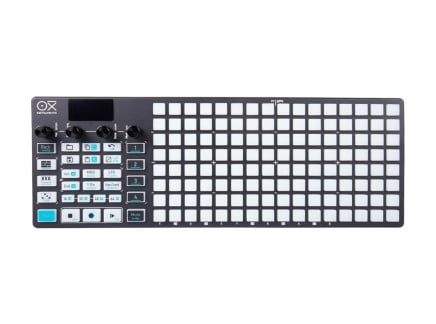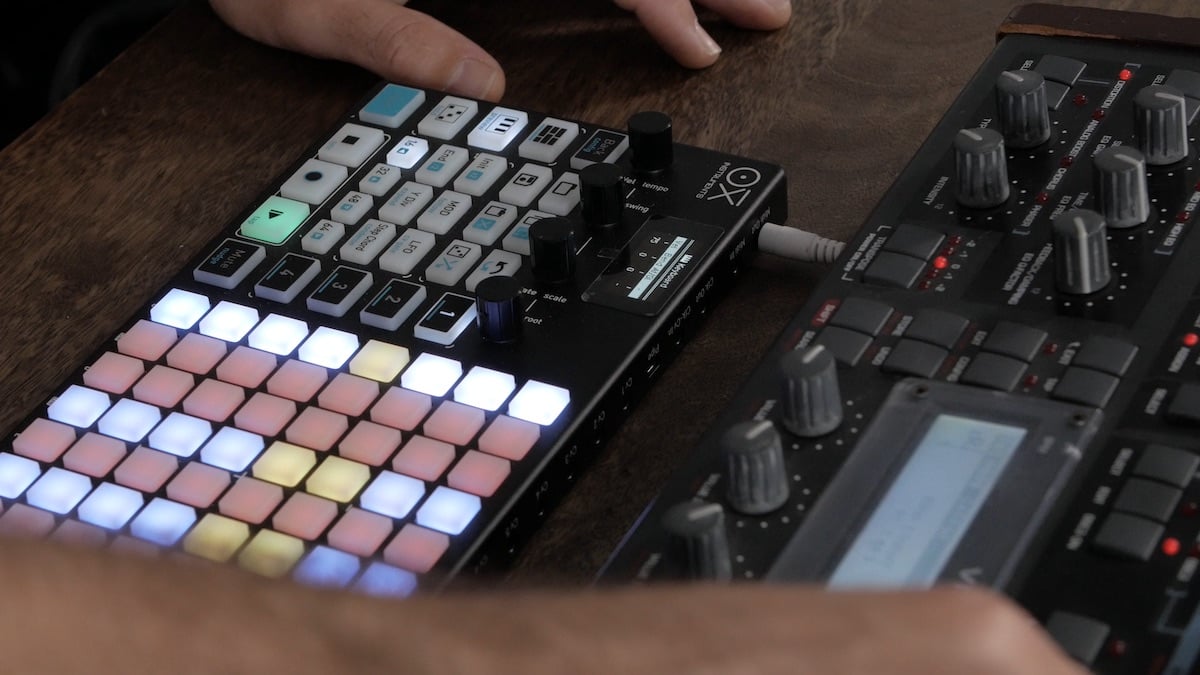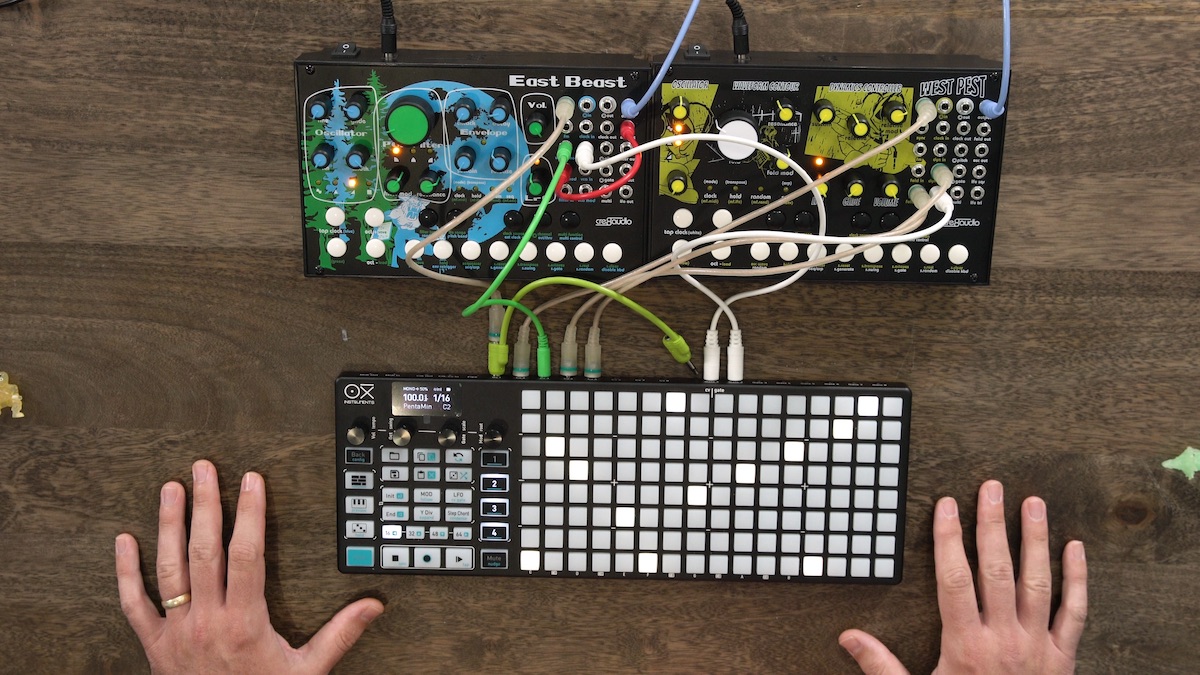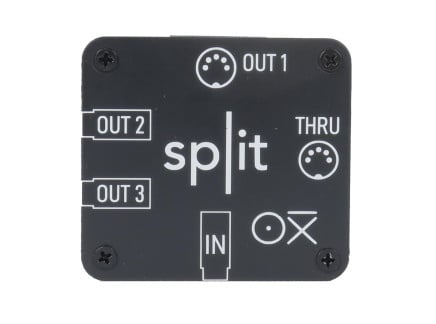Sequencers have evolved over the years from creating only simple linear patterns—they now can offer a completely new way to interact with tonal clusters in creative ways. We are currently in a time where you can find a type of sequencer to fit your every need, whether it's a simple Korg SQ-1 or generative Torso T-1. If you are looking to interact with your instrument without the use of a keyboard, now is the time to revel in the glory of technology.
The only obstacle is deciding which direction you should go, at least it used to be: but with the OXI Instruments One, you can have a veritable cornucopia of sequencers available to you in a single device—along with the connectivity to integrate just about any piece of hardware.
Sequencers in some shape have been present in music since technology could first allow it: player pianos from the early 20th century were some of the first commercially available sequencers, yet inventors even as far back as the 9th century were creating ideas and inventions for water powered instruments. The idea to have music play itself, or accompany other instruments without human interaction has been around for a while. In fact, check out the in-depth, 2-part Signal Historical Archives deep-dive into sequencers for all the details you could ever want: Part 1 & Part 2.
As with any instrument, you do have to spend some time learning how to navigate the interface, but OXI has created a quick-to-learn, fun way to interact with your sequences. Alternatively, you can just let it play by itself: the choice is yours, and either way, it functions beautifully. The core of the device is the hard-to-miss 128-pad grid, which gives you visual feedback for your sequences, lets you play notes like a traditional keyboard (albeit with a different layout), and control all your sequences with the arranger view. Aside from that, learning about the different types of sequencers and how to interact with them is the only other important bit of information that one needs to know in order to start making sounds.
Sequencing Modes on the OXI One
Using the 4 tracks available, you can assign each to a different type of sequencer. You have a Mono sequencer which lets you program just a single note at a time, and Poly, which is similar…except you can program multiple simultaneous notes. For each of the tracks, you are able to adjust the time, tie notes, and add slides as you would on normal sequencers. However, what is helpful and fairly unique is the option to quantize to a plethora of modes/scales and set which key you're in, as well.
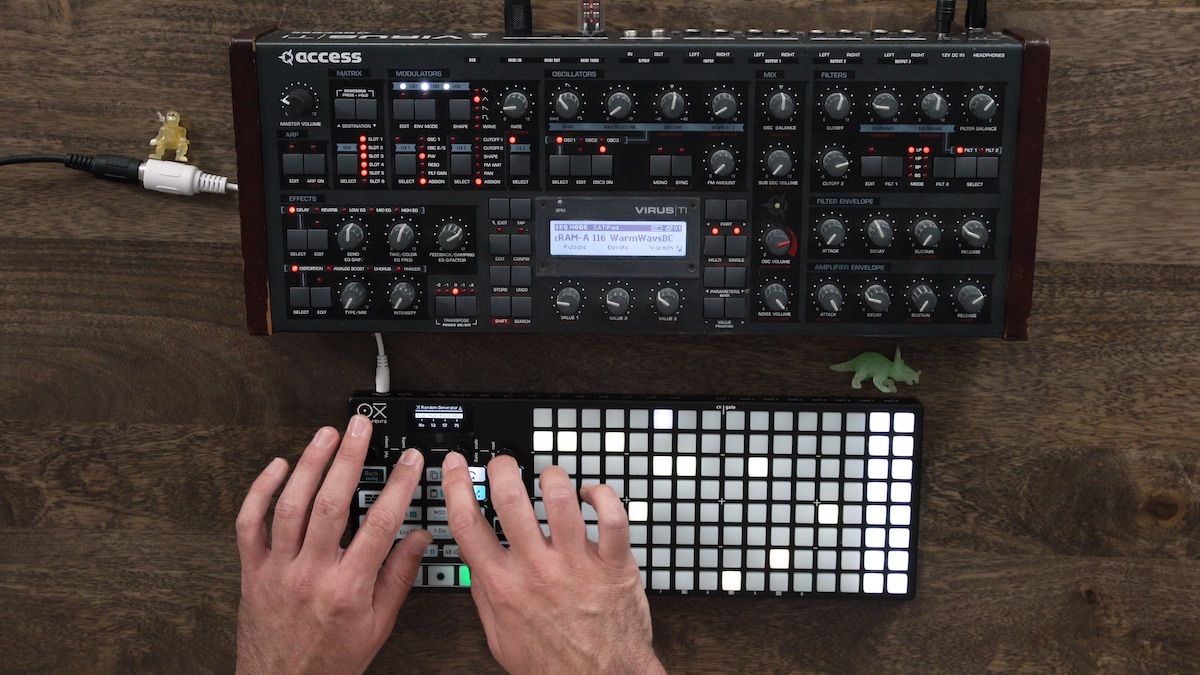
This carries over to the Keyboard view, which lets you manually play notes independent of the sequencer, and when quantized, you can never play a wrong note. Here, you can also add note Rolls, which is great for short attack sounds to add a bit of skittering delight. In the normal sequencer mode, you have an octave (or more if you use a 5-note scale), which lets you plug in the notes by just touching the correct pad. Using the Y Div button, you can then scroll up and down the grid to access other octaves.
The Chord sequencer is incredibly helpful for programming longer pads that move from one diatonically correct chord to another, with options to adjust inversion and chord style. When using this type of sequencer, you program the notes much the same as in the Mono or Poly modes, however each note also triggers a chord related to the selected scale and key.
The Keyboard view also changes, giving you access to different chords and various inversions. There is an independent Spread and Voicing column to allow for unique chord shapes, and with the arpeggiator mode turned on, you can arpeggiate any chord, too.
Far from completely random, the Stochastic mode refers to a probability set that is defined by you in order to create generative music. In the OXI, that means that your Sequencer view completely changes to columns of probability assigned to each note. A full lit column means that note is very likely to be triggered; the inverse is true for an unlit or partially lit column. You can also adjust the time division and octave range per step, along with the chance that they will change at all. If you find something that sounds good, you can drop the chance that the notes will change to 0% and keep it locked in.
Multi mode, though, is where things can get truly complex and wild: using this sequencer gives you 8 independent mono sequencers each with the option to change which MIDI channel or CV output it goes to. This is great for drums, but also incredible for multitimbral instruments that can take 16 or more channels of MIDI. By using the optional Split MIDI breakout box and having all 4 tracks set to Multi mode, you can get 32 channels of MIDI. It's also helpful if you have something like the Virus, Blofeld, or Essence FM, because you could set a couple of the Multi mode's tracks to the same MIDI channel, letting you have polyphonic operation either in the same time division, or in completely different rhythmic variations. This mode can be dense and complex or very straight forward, which really underscores the versatility of the OXI One.
Connect to Everything
With the OXI One, you can pretty much connect to anything and everything. Using the USB-C port, you can just hook this bad boy up to your computer and have a great way to control your softsynths or mobile device; you can use Bluetooth to connect to your computer or smartphone, too. Of course, there are 3.5mm TRS MIDI outputs that let you interface with any hardware that has a MIDI connection, and the aforementioned Split MIDI breakout box gives you two MIDI outputs, which can be configured in the OXI.
Aside from that, the true glory of the OXI One is the eight CV and eight Gate outputs, which can be used to interface with your modular gear. In fact, they realize that many people will want to use this almost exclusively with Eurorack, so they have an HDMI output that connects to their passive Pipe Eurorack module, which gives you the CV connections right in your modular system for a very clean setup. The CV outputs can also be set up to produce Envelope or LFO signals, opening up many options for modulation and making this perfect for a smaller system.
One of the true joys in using the OXI One is being able to have access to all your equipment in a compact interface. While it can be used with a singular purpose, it really excels at bringing everything together. If you have a multi/bi-timbral synth, a small Eurorack system with a voice or two, want to integrate some software synths, and are looking to easily compose with all of them, this is the device for you.
OXI One in Performance
You can take this on the road easily with its impressively long battery life and its sturdy build. While you are playing it, there are some great features that make this sequencer as playable as you'd like. The Arranger view lets you easily bring up saved patterns or trigger groups of patterns, breaking you free yourself from the trappings of "structure" so you can bring in the right pattern for the right moment. Along with that, you don't even need a pattern to get going—you can use one or more of the tracks as a realtime MIDI controller and just play a melody line while controlling the velocity, pitch bend or modulation with the four encoders. Using the record button lets you record what you play on-the-fly, and with the option to keep it quantized or not, you can custom tailor your experience and performance. Modulation can also be played and sequenced which gives you an extra dynamic to your performance. Modulation automation can be assigned to any MIDI CC, or even routed to a CV output.
This barely touches the depth of the OXI Instruments One, and spending time watching some tutorial videos (including ours!) will prove incredibly helpful in understanding everything it can do. The manual, as always, is your best friend and is well thought out making it easy to understand how stuff works. One of the coolest things we've noticed is the consistency with which the firmware gets updated: the team is dedicated to creating the one sequencer to power your entire studio, and they are succeeding. So if you need a performative sequencer to tie your whole setup together? OXI One is one of our top recommendations.

